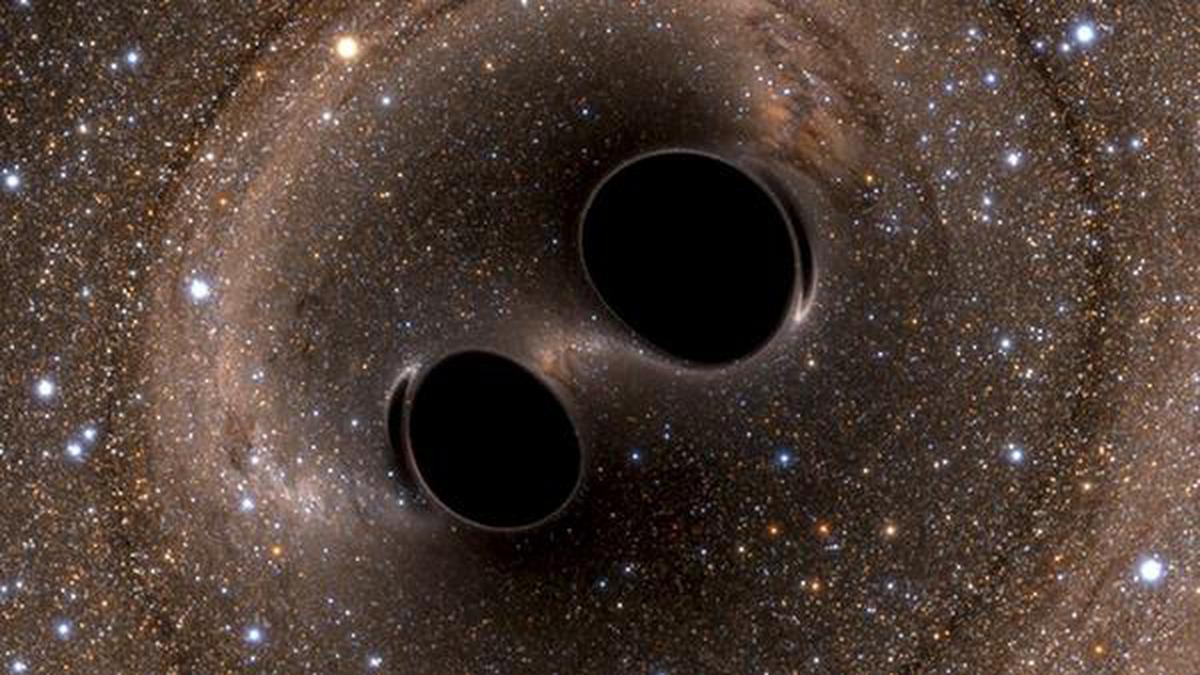The impending collision of two black holes is seen in this still image from a computer simulation released by the LIGO collaboration in 2016.
| Photo Credit: Reuters
A: A black hole merger happens when two black holes — extremely dense objects with gravity so strong that not even light can escape — get close and start orbiting each other. Over time, they lose energy by sending out invisible ripples in spacetime called gravitational waves. As they spiral closer together, their orbit shrinks until they finally crash and combine into a single, bigger black hole.
This moment releases a huge burst of gravitational waves, which can be detected on the earth by special observatories like LIGO in the US, Virgo in Italy, and KAGRA in Japan.
Think of the phenomenon like two figure skaters spinning toward each other and then grabbing hands to spin faster as one, except in extreme physical conditions.
Catching these events allows scientists to learn new things about black holes and the universe.
In fact, on July 10, an international collaboration of scientists reported discovering an especially massive black hole merger, named GW231123. LIGO, Virgo, and KAGRA had detected gravitational waves from the merger on November 23, 2023. In this event, two black holes, about 137x and 103x the mass of the sun, crashed together, forming an even bigger black hole. This was unusual because black holes in this mass range are thought to be rare.
The discovery suggests large black holes might form when smaller ones merge, not just from dying stars. GW231123 also showed both original black holes spinning really fast, which challenges existing theories of their existence.
Published – July 15, 2025 03:05 pm IST
